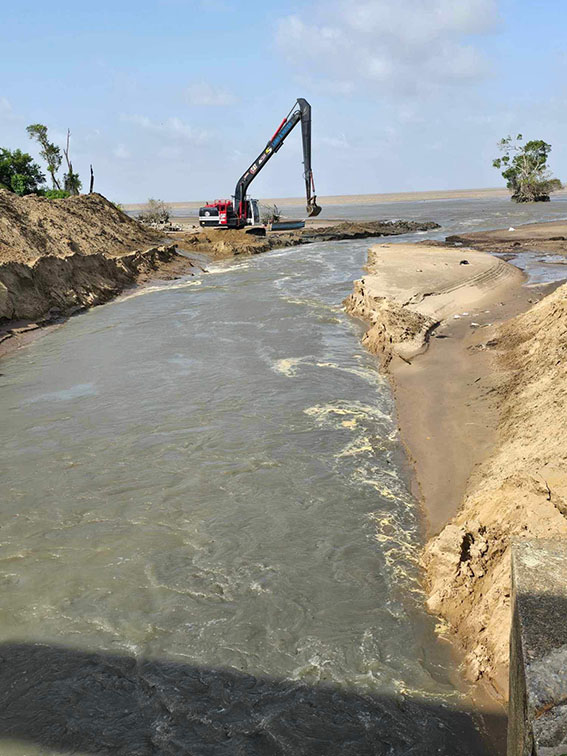-floodwater down by 10 inches
By Bebi Oosman
Almost 80% of the intended rice crop has been sown in Black Bush Polder and the floodwater as of yesterday had dropped by ten inches, Regional Chairman, David Armogan reported yesterday.
After the Region Six council statutory meeting yesterday, Armogan who heads the Regional Agriculture Committee, told Stabroek News that “actually in terms of rice in the Black Bush Polder area we had about 75% to 80% of paddy being sown before the floods came.”
According to Armogan, as soon as the rain hit, a lot of farmers “released water from the rice field into the main drainage system so that would have compounded the problem so the water that was stored in the rice fields for growing purposes because of too much of water it had to be discharged into the drainage system so the rainfall and that compounded the problem.”
There were reports of major flooding in the Black Bush Polder, Corentyne area especially the Lesbeholden Polder over the last several weeks.
However, the chairman noted that as of yesterday morning he was told floodwaters had dropped about ten inches “especially in the Lesbeholden area and in all the area, the entire Black Bush area because we had two days of sunshine and so the water levels has been dropped.”
Noting that all regulators are closed so that water from the Kokerite Savannah cannot come down to Black Bush Polder, he said “…there is no question of Kokerite savannah water coming into Black Bush Polder as used to happen before because we have closed all the regulators”.
He then stressed that with the outfalls being cleared and pumps operational within the next few days there should be some normalcy returned to Black Bush Polder.
In the front land areas, Armogan said that there still is about 300 acres of rice left to be harvested from the last crop. This, he said was due to some farmers starting late as at this time “all the rice should have been harvested we are into the second crop already and the people in the first crop have not completed harvesting the paddy as yet.”
The chairman added, that although farmers are advised not to sow after a certain period they do not pay heed as it is how they earn their livelihood.
Crabwood Creek
Turning to the Crabwood Creek area, he said that approximately 50% of rice has been sown there. “They don’t have problems with flooding right now because of interventions that were made earlier because of a new canal that was done there at Crabwood Creek so they don’t have problems with flooding.”
In his report to the council yesterday, Armogan said that the region is in long-term need of an excavator on a pontoon to desilt the exterior of the outfalls. “One of the problems is we don’t have the pontoon available right now.”
He then told this newspaper that contractor Peter Lewis was given a contract to desilt the outfalls since he has dredges which he is using to clear a path for the water. “Because if you pump and if you open the kokers and the water don’t get out it backs up back and that don’t make sense.”
Stabroek News was told that Region Six is likely to receive an amphibious excavator from the six acquired by the Ministry of Agriculture.
Meanwhile, in terms of livestock, Armogan said that there have been no major reports of losses due to flooding as he noted that farmers continue to benefit from veterinary services and poultry supply, while the distribution of black giant chickens to 154 farmers was carried out.
Further, 3, 237 gallons of molasses was provided to farmers across the region.
Noting that there have been two cases of suspected foot and mouth disease, he said that blood samples were taken from animals for testing.
For cash crops, the Chairman explained that the National Agricultural Research and Extension Institute is conducting surveillance across the region for cash crops affected by flooding, adding that distribution of fertilizers across the region was carried out at 55 lbs per farmer.






